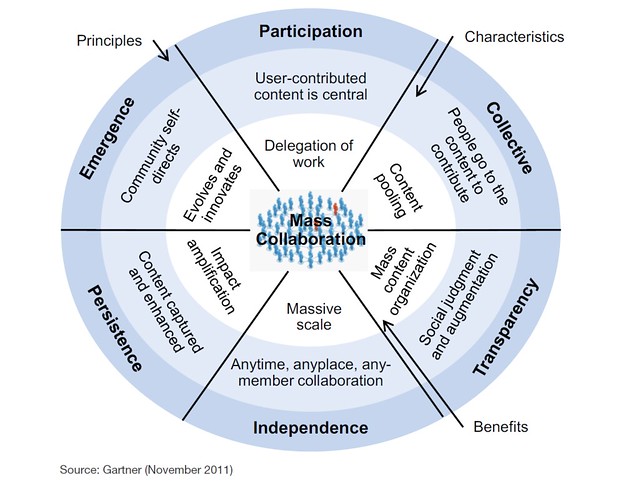Yesterday research emerged detailing how few senior managers are really seeing the benefits of social media usage. A major obstacle for companies to overcome if they are to become social businesses is to ensure they can measure the clear ROI of their social endeavours.
Is collaboration the answer? A new infographic suggests it is. It states that 75% of companies find online collaboration important, or at least will do over the coming year. The graphic was produced by Clinked, and their founder Tayfun Bilsel clearly thinks a sea change is under way.
We used to spend half our time educating clients about the benefits of social collaboration. These days, businesses are approaching us with clearly defined strategies for reducing overheads and connecting remote working teams. The market has grown up.
So is online collaboration effective?
Given that ROI is crucial in proving the value of social business, the two questions are whether online collaboration is indeed valuable, and if it is, how can its value be measured.
Recent research showed the value of face-to-face time when collaborating between two offices. When using web based tools to enable collaboration however, you are opening up the process to a much wider range of people, including of course customers and other stakeholders from outside of your organisation.
Earlier this year Gartner produced some tips on how to ensure your collaboration hits the spot. You can read the tips in full here or use the graphic below. After that I’m going to expand a bit on how you can measure online collaboration.

Measuring online collaboration ROI
Suffice to say, measuring online collaboration isn’t very easy. Just because it’s hard however doesn’t mean you should adopt some fuzzy metric instead that doesn’t really help you get to the bottom of the issue. There are some analytical approaches that aim to measure collaboration, but I’m far from convinced they’re very useful for most organisations. I would argue however that measuring collaboration is in itself wrong because it forces you to look at the wrong thing.
You see we collaborate in order to achieve things in a better manner than we could achieve as individuals. It’s those end results that need to be measured. Measuring collaboration means a focus on measuring whether the organisation’s people and/or departments work well together, whilst ignoring whether those people who are working well together are actually achieving anything useful.
If you focus instead on the business outcomes you want to achieve, and measure those, you’ll be able to see whether any trends emerge. You can then work back from there and discover how those results were achieved, and whether collaborative behaviour was evident.
It’s not an ideal approach, but at the moment I think it’s the best available. Do you have any other methods of measuring collaboration? Do please share them in the comments below.
*update* for a more detailed look at measuring ROI visit this post.
How is collaboration in general measured?
Think that warrants a whole new post Andrea. Leave it with me (and watch this space)
Here you go Andrea
http://adigaskell.org/2012/10/31/how-to-…